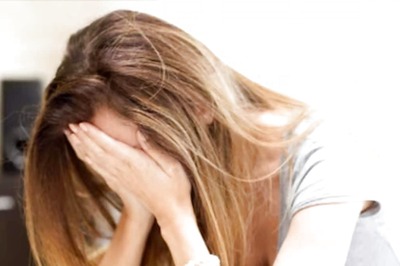
views
Benefits of Dry Brushing
Lymphatic drainage A lymphatic drainage massage involves applying pressure on certain areas of the body to reduce swelling caused by any number of health conditions. These conditions include rheumatoid arthritis and fibromyalgia, and it’s also commonly used after breast cancer surgery. Dry brushing in the direction of the lymph nodes helps to release the buildup of toxins and alleviate pain, inflammation, and aid in stress management. Those with pre-existing conditions like heart disease, stroke, and blood clots should not attempt dry brushing for the purpose of lymphatic drainage. Lymphatic drainage dry brushing should be coupled with other treatments for maximum success, like wearing compression garments.
Exfoliation This refers to the practice of removing dead skin cells from the surface of this skin. When done via dry brushing, this is categorized as a physical exfoliation, but chemical exfoliation also exists. Exfoliate by rubbing the brush on selected areas in a circular motions for about 30 minutes. This is a great option to unclog pores and combat dull skin. However, irritation may occur as a result of exfoliating too often. The frequency of your exfoliation practices mainly depend on the kind of skin you have. If you have normal skin, you can begin by exfoliating 2-3 times a week and see how your skin reacts. If you have oily skin, exfoliating daily is likely to reap many benefits. If you have sensitive skin, try exfoliating once a week and continue if there if no irritation. If your skin reacts poorly, exfoliating with a dry brush may not be for you.
Blood circulation Dry brushing increases the flow of blood to the surface of the skin, not only resulting in a glowing complexion but also facilitating blood flow to essential organs and muscles. This can help relieve muscle soreness and generally promotes skin health. This can energize the body, creating the feeling of “reinvigoration.”
Relaxation Using gentle dry brushing techniques can help relief and manage stress, just like a professional massage would. Releasing tension and pressure in sensitive areas of the body, dry brushing regularly can become an enjoyable form of self-care. The rhythmic motion of the dry brush massage can also work to lightly sedate the brusher before bed, promoting better sleep.
Cellulite reduction Some people believe that dry brushing can reduce the appearance of cellulite, although there’s no scientific basis for this. It’s more likely that the skin plumps up in response to the dry brush and fills in the “cottage cheese” dimples created by cellulite. Although this doesn’t provide a long-term fix, dry brushing problem areas prior to an event could temporarily provide the desired tight-and-toned look.
Considerations of Dry Brushing
Inflamed skin Don’t dry brush along areas of inflamed skin, whether that be a temporary problem due to rash or infection, or part of a more serious condition, like eczema and psoriasis. Applying a dry brush to red, blotchy areas of the skin will only result in increasingly irritated skin, further complicating your original health issue. It’s important to remember that dry brushing should feel pleasurable, not painful. If it hurts, you shouldn’t continue dry brushing that part of your body. Do not dry brush over a sunburn. Do not dry brush over bumps, warts, or otherwise raised skin.
Open wounds The only thing worse than dry brushing on irritated skin is dry brushing over open wounds. The risk of infection is high, and is only even more increased by the fact that dry brushing over sensitive areas could result in micro-tears. Acne-prone skin may lead to small, tiny wounds, so avoid dry brushing during breakouts.
How to Dry Brush
Invest in a dry brush. Dry brushes are relatively affordable, but selecting the right one for you is key. In general, you want to find one with firm brushes and an organic design, easy to use in all areas of the body. You should also consider how often you’d like to use it, as certain bristles are more suited for daily use than others. If you only want to use it on a specific part of your body, like your thighs, it’s best to pick a dry brush with a long handle. Dry brushing to reduce ingrown hairs requires a brush with softer bristles. Boar bristles are best for smoothing out coarse patches of skin. Only dry brush your face if you’re using a softer brush designed for the face.
Start at the bottom of your body and brush your way up. When dry brushing, you want to cover as much surface area as possible. Begin at the bottom of your soles, brushing the thin skin in small circles, and applying light pressure. The thinner the skin, the lighter the pressure you should apply.
Use sweeping motions on limbs. As you move your way up toward your legs and arms, brush in a side-sweeping motion, moving toward your body’s lymph nodes, some of which are located in the backs of the knees, along with the groin, chest, and armpits. There are about 600 lymph nodes in the average person, although every body is slightly different. You can press more firmly in these areas where the skin is bit thicker.
Brush in large circles across your torso. Brushing upwards in clockwise motion facilitates blood flow in the direction of your lymph nodes. Start at your lower abdomen and work your way up your upper abdomen, chest, back, and shoulders. Remember to push the brush toward the lymph flow in order to reduce bloating and improve your immune system.
Rinse off in the shower. Hop in the shower to wash off all of the dead skin cells left on the surface of your skin. Choose cooler water for a refreshing and rejuvenating experience and to minimize the risk of irritating your freshly buffed skin with heat. You’ll emerge with a smooth, radiant complexion. Don’t forget to clean your brush in the shower as well, so it stays clean for future use.
Finish by applying moisturizer. As the final step to this wellness routine, apply moisturizer or body oil to your scrubbed body. This will help soothe any potentially sensitive areas, while providing you with a hydrating glow. A scent-free lotion or oil would work best, as any added chemicals could irritate the skin. Aloe vera or shea butter-based body creams are particularly helpful in sealing in moisture and nutrients.


















Comments
0 comment